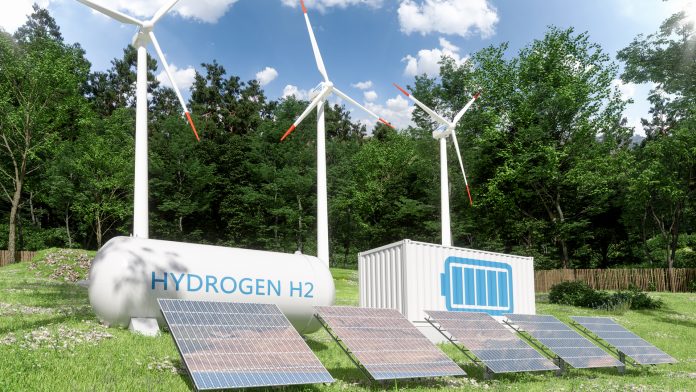Researchers show that unitized regenerative fuel cells lead to enhanced hydrogen production and power generation.
Green hydrogen is a form of clean energy that can be produced without the use of fossil fuels; lately, green hydrogen has gained consideration as it can possibly be used to advance carbon neutrality. Korean researchers have now successfully enhanced the efficacy of unitized regenerative fuel cells that can be utilised to proficiently generate green hydrogen and power.
The unitized regenerative fuel cells boast both hydrogen production and fuel cell modes. They are sustainable, economical, and independent energy storage and power generation devices that need far less space for operation.
When the quantity of electricity produced from renewable energy sources such as sunlight and wind power is greater than the amount of electricity necessary, the electrolysis cell mode is used to generate hydrogen to store energy. When the demand for electricity is greater, the fuel cell mode can be used to generate power.
The Korea Institute of Science and Technology (KIST) has publicised that a group led by Dr. Hyun S. Park, of Center for Hydrogen Fuel Cell Research, Dr. Jong Min Kim, of the Materials Architecturing Research Center, and a research group led by Prof. Yung-Eun Sung, of the Seoul National University, have worked together to create a component based on an innovative notion to surmount the challenges instigated as a result of the mixing of water and gas inside a bifunctional device used for hydrogen production and power generation – the unitized regenerative fuel cells. This enables the effective transport of water and gas and greatly enhances the performance and round-trip efficiency of the devices.
Dr Hyun S Park’s research team acknowledged the explanation for the reduced efficacy of the unitized device under conditions of alternating electrolysis cell and fuel cell modes. The group credited the difficulties to the repeated input and drainage of water and gas that potentially led to the trapping of the residual water and gas present inside the device. The scientists hypothesised that a hydrophilic electrode was necessary to enable the transportation of water and a hydrophobic electrode was essential to proficiently conduct gas phase reactions to address the problem. The surface of the electrode was first treated to have hydrophilic properties and then covered with a micropatterned plastic layer to fabricate an electrode that may display both hydrophilic and hydrophobic properties.
This enabled the smooth transportation of water and gas. The rate of drainage of the gas (selective drainage from the surface of the developed electrode) could be increased 18-fold. The performance could be enhanced 4-fold under conditions of the fuel cell mode when the newly established component was utilised to construct the unitized device. The effectiveness of hydrogen generation attained by employing this method is twice the proficiency of hydrogen production attained by applying the conventional component. Additionally, the stability of the improved performance (with respect to hydrogen production and power generation) was verified over 160 h.
Dr. Hyun S. Park of KIST commented, “This is the first time that amphiphilic electrodes exhibiting stable and high performance under conditions of both fuel cell power generation mode and electrolysis green hydrogen production mode have been used for the fabrication of unitized regenerative fuel cells. It is expected that the developed device can also be used for the fabrication of various other devices, such as electrochemical carbon dioxide reduction and nitrogen reduction devices, where both gas and liquid enter the devices simultaneously.”









